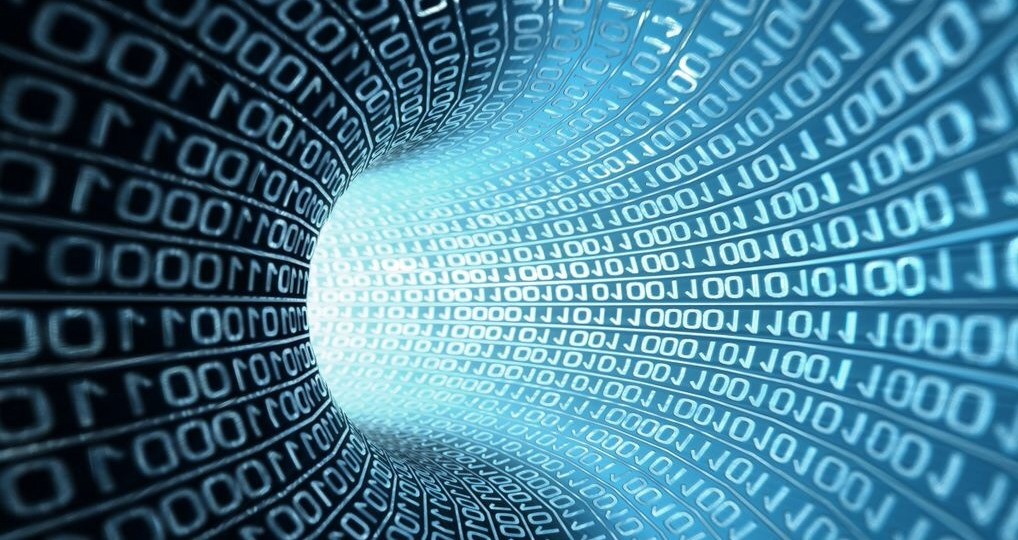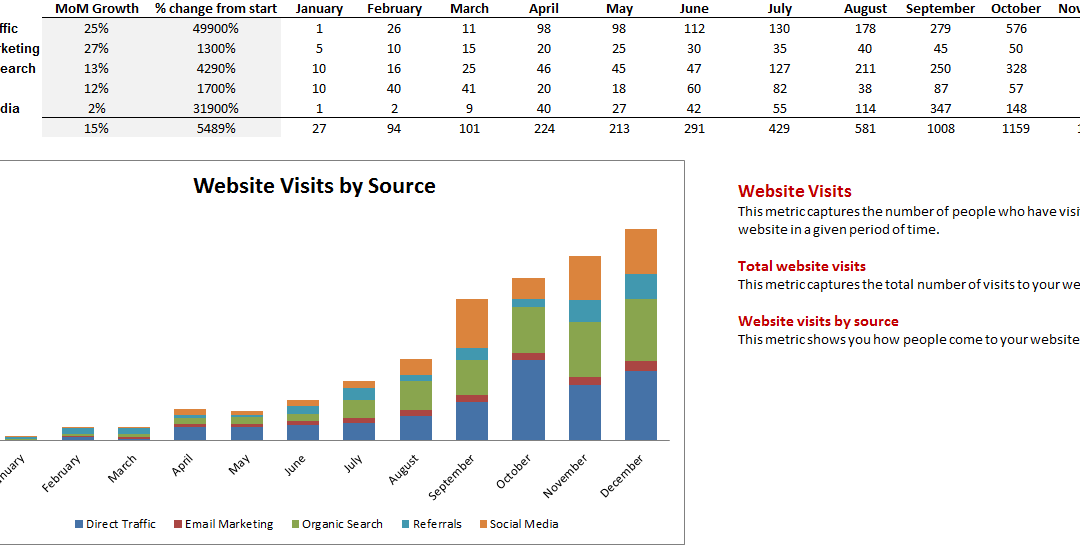
by Fronetics | Oct 21, 2014 | Blog, Data/Analytics, Marketing, Social Media

Individuals within the logistics and supply chain industries want to learn more about social media ROI. A recent survey conducted by Fronetics found that 81 percent of respondents reported that information on proving social media ROI would be helpful to their company.
Proving social media ROI can seem impossible, but it is not if you put the right framework in place. Here’s how to put that framework in place, and prove social media ROI:
Set goals
Support your goals with SMART objectives. This allows you to track and measure your progress towards meeting your goals.
- Specific: Describe your objectives specific to the results you want. Go deeper than “gain leads” to “achieve a visitor to lead conversion rate of one percent.”
- Measurable: Metrics are essential. You can’t assess your progress towards your goal without metrics.
- Achievable: Make your goal achievable. A visit to lead conversion rate of 10 percent may not be realistic. Your goal of a visitor to lead conversion rate may be more plausible. When setting your objectives, keep reality in check.
- Realistic: As with any job, you need to have the right tools. Make sure that you have the resources, tools, and talent to meet your objectives.
- Timed: Be specific with your objective and incorporate a time frame.
Track and measure
Once you have set your goals and objectives and have identified your key metrics, put a system in place that will track and measure your metrics. At the very least, your metrics should be tracked on a monthly basis.
React
Tracking metrics is not enough. You need to react. Look at your metrics in the context of your goals and objectives. Which efforts are moving you towards your objectives and goals? Which efforts are not supporting your goals and objectives? Can these efforts be tweaked? Should you scrap them and try something new?
Taking a data driven approach is critical to proving ROI.
Wash. Rinse. Repeat.
This process is not static. When you achieve your goals and objectives, set new ones. If you are really struggling to meet your goals and objectives, you may need to revisit them to determine if they need to re-worked.
Proving social media ROI is possible. But it needs to be supported by a framework. Take the time to put a solid framework in place for your business.

by Fronetics | Oct 21, 2014 | Blog, Data/Analytics, Marketing, Social Media

Individuals within the logistics and supply chain industries want to learn more about social media ROI. A recent survey conducted by Fronetics found that 81 percent of respondents reported that information on proving social media ROI would be helpful to their company.
Proving social media ROI can seem impossible, but it is not if you put the right framework in place. Here’s how to put that framework in place, and prove social media ROI:
Set goals
Support your goals with SMART objectives. This allows you to track and measure your progress towards meeting your goals.
- Specific: Describe your objectives specific to the results you want. Go deeper than “gain leads” to “achieve a visitor to lead conversion rate of one percent.”
- Measurable: Metrics are essential. You can’t assess your progress towards your goal without metrics.
- Achievable: Make your goal achievable. A visit to lead conversion rate of 10 percent may not be realistic. Your goal of a visitor to lead conversion rate may be more plausible. When setting your objectives, keep reality in check.
- Realistic: As with any job, you need to have the right tools. Make sure that you have the resources, tools, and talent to meet your objectives.
- Timed: Be specific with your objective and incorporate a time frame.
Track and measure
Once you have set your goals and objectives and have identified your key metrics, put a system in place that will track and measure your metrics. At the very least, your metrics should be tracked on a monthly basis.
React
Tracking metrics is not enough. You need to react. Look at your metrics in the context of your goals and objectives. Which efforts are moving you towards your objectives and goals? Which efforts are not supporting your goals and objectives? Can these efforts be tweaked? Should you scrap them and try something new?
Taking a data driven approach is critical to proving ROI.
Wash. Rinse. Repeat.
This process is not static. When you achieve your goals and objectives, set new ones. If you are really struggling to meet your goals and objectives, you may need to revisit them to determine if they need to re-worked.
Proving social media ROI is possible. But it needs to be supported by a framework. Take the time to put a solid framework in place for your business.

by Fronetics | Oct 2, 2014 | Big Data, Blog, Data/Analytics, Strategy, Supply Chain

Big data is big. It is revolutionary. It is transformative. But what the heck is it?
MIT’s Technology Review does a great job of outlining the hype and the confusion around big data:
“There is unanimous agreement that big data is revolutionizing commerce in the 21st century. When it comes to business, big data offers unprecedented insight, improved decision-making, and untapped sources of profit.
And yet ask a chief technology officer to define big data and he or she will stare at the floor. Chances are, you will get as many definitions as the number of people you ask. And that’s a problem for anyone attempting to buy or sell or use big data services—what exactly is on offer?”
Research conducted by Accenture highlights this dichotomy. Eight-nine percent of survey respondents reported that they believe big data will revolutionize business operations in the same way that the Internet did. Seventy-nine percent of respondents reported that “companies that do not embrace big data will lose their competitive position and may face extinction.” However, the research found that companies hold “differing views of data sources and uses,” and that “valuable data sources are omitted or overlooked.”
Big data and the supply chain
Accenture’s Global Operations Megatrends research looked at big data analytics in the supply chain. Ninety-seven percent of supply chain executive reported that big data analytics can benefit their supply chain. Their expectations for big data analytics include: creating an organizational ability to react more quickly to changes (48 percent); helping their company gain insights about the future (45 percent); and achieving a cross-functional view of the supply chain with the objective of optimizing overall supply chain performance (43 percent).
Although the majority of executives believe big data analytics will benefit their supply chain only 17 percent of survey respondents reported that their company has already implemented analytics in one or more supply chain processes/functions. Accenture makes this supposition:
“While there is considerable hype about, and a high level of general awareness of the value of, ‘big data,’ many companies still do not fully understand how to apply analytics to this data to drive higher supply chain (and overall enterprise) performance.”
Given Accenture’s research, as well as that conducted by Jonathan Stuart Ward and Adam Barker at the University of St Andrews in Scotland, I’d take this one step further. In spite of the hype (or perhaps because of it) there remains confusion regarding what big data actually is. Without a clear definition and understanding of big data, it is (and will continue to be) a challenge to implement big data analytics. Before we realize transformation we need to get to understanding.

by Fronetics | Oct 2, 2014 | Big Data, Blog, Data/Analytics, Strategy, Supply Chain

Big data is big. It is revolutionary. It is transformative. But what the heck is it?
MIT’s Technology Review does a great job of outlining the hype and the confusion around big data:
“There is unanimous agreement that big data is revolutionizing commerce in the 21st century. When it comes to business, big data offers unprecedented insight, improved decision-making, and untapped sources of profit.
And yet ask a chief technology officer to define big data and he or she will stare at the floor. Chances are, you will get as many definitions as the number of people you ask. And that’s a problem for anyone attempting to buy or sell or use big data services—what exactly is on offer?”
Research conducted by Accenture highlights this dichotomy. Eight-nine percent of survey respondents reported that they believe big data will revolutionize business operations in the same way that the Internet did. Seventy-nine percent of respondents reported that “companies that do not embrace big data will lose their competitive position and may face extinction.” However, the research found that companies hold “differing views of data sources and uses,” and that “valuable data sources are omitted or overlooked.”
Big data and the supply chain
Accenture’s Global Operations Megatrends research looked at big data analytics in the supply chain. Ninety-seven percent of supply chain executive reported that big data analytics can benefit their supply chain. Their expectations for big data analytics include: creating an organizational ability to react more quickly to changes (48 percent); helping their company gain insights about the future (45 percent); and achieving a cross-functional view of the supply chain with the objective of optimizing overall supply chain performance (43 percent).
Although the majority of executives believe big data analytics will benefit their supply chain only 17 percent of survey respondents reported that their company has already implemented analytics in one or more supply chain processes/functions. Accenture makes this supposition:
“While there is considerable hype about, and a high level of general awareness of the value of, ‘big data,’ many companies still do not fully understand how to apply analytics to this data to drive higher supply chain (and overall enterprise) performance.”
Given Accenture’s research, as well as that conducted by Jonathan Stuart Ward and Adam Barker at the University of St Andrews in Scotland, I’d take this one step further. In spite of the hype (or perhaps because of it) there remains confusion regarding what big data actually is. Without a clear definition and understanding of big data, it is (and will continue to be) a challenge to implement big data analytics. Before we realize transformation we need to get to understanding.

by Fronetics | Sep 10, 2014 | Blog, Data/Analytics, Marketing, Strategy
Metrics matter. Metrics allow you to measure success, drive strategy, and demonstrate the ROI of your marketing efforts. Conversions are one of the most important metrics to monitor.
Why conversion rates matter
What is a conversion? A conversion means action. It means that someone took some action that entered them into your funnel or moved them further down your funnel. Examples of conversions are: downloading a white paper, filling out a form, requesting information, opening an email, and becoming a customer.
By monitoring and tracking conversions you can determine what marketing efforts are paying off. Additionally, by monitoring and tracking conversions you can identify which efforts need to be re-evaluated or even discontinued. In short, conversion rates can help you measure your ROI.
Why conversion rates don’t matter
Conversion rates are not the Holy Grail of metrics. Your website should be a magnet. It should attract and engage prospective customers and current customers. Your website should serve to educate and to establish your business as an industry leader. Eighty to 90 percent of prospects are not ready to make a purchase when they first engage with your company. Conversion rates don’t capture the amount of time people spend on your website, learning, exploring, and getting to know your business. Conversion rates also do not capture the amount of time current customers spend on your website – valuing your company as a resource.
While conversion rates are an important metric to measure, remember that they are not the end all be all.
Tracking conversion rates
We created a template that you can download and use to track conversion rates and other critical metrics. While the template captures visitor-to-lead and lead-to-customer conversion rates, you can easily modify the template to include additional conversion rates that are useful to your business.



by Fronetics | Sep 2, 2014 | Blog, Content Marketing, Data/Analytics, Marketing, Supply Chain

To grow your B2B business you need to take a comprehensive data driven approach to marketing. Metrics enable you to measure success, drive strategy, and demonstrate the ROI of your marketing efforts.
What metrics should you track?
Given that your objective is to attract, acquire, and retain customers, the most effective metrics to track are those where the unit of focus is the prospect, lead, or customer. These include the following:
Visits
Visits capture the number of visitors to your company’s website in a given period of time. In addition to tracking the total number of visits, it is also important to track visits by source. That is, how visitors come to your website. Sources typically include direct traffic, organic search, referrals, social media, and email marketing.
Reach
Reach is the number of people who can be reached through your marketing channels (e.g. LinkedIn, Twitter, and Facebook). This metric is a good indicator of how well the content you are publishing attracts new people to your network, and how well the content engages people within your network. In addition to tracking your company’s total reach (the total number of people you can reach across all channels), you should also track reach by channel.
Leads
Leads are one of the strongest indicators of ROI. By tracking leads by source, you can identify where your marketing efforts are most effective, areas where you can improve, and areas you could eliminate from your strategy.
Customers
Customers are also a strong indicator of ROI. Like leads, customers should be tracked by source.
Conversion rates
Conversion rates measure the percentage of people who are moving from one marketing stage to the next. An increase in your conversion rates implies an improvement in the quality of your content and/or traffic. You should track the visit-to-lead conversion rate (How many of your website visitors are becoming new leads?) as well as the lead-to-customer conversion rate (Are you generating sales-ready leads?).
Ranking
Ranking matters. The top listing in Google’s organic search results receives 33 percent of the traffic compared to 18 percent in the second position. Two metrics you can track are your domain authority and your marketing grade.
Domain authority is a score ranging from 1 to 100 that represents how well a website will perform in a search engine ranking. The lower the score – the less likely it will be found. Marketing grade is a holistic measure of a site’s online presence as measured by HubSpot’s Marketing Grader on a scale of 0-100. A higher score is better.
How to track metrics for success
Having an established database to capture your marketing metrics is critical to success. We created a template that you can download and use to track your metrics, measure success, and drive strategy. One of the great features about this template is that it generates graphs that can be used in your reports and presentations.









